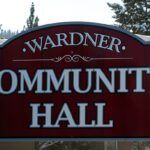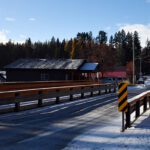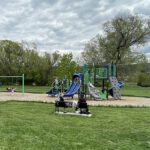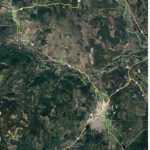Home »

Seismic mess is going to hurt
By Ian Cobb
Even though the East Kootenay is not greatly threatened by earthquakes, compared to the Lower Mainland and Vancouver Island, where doom awaits, we are being impacted by them before they strike.
On Monday, April 18, B.C. Minister of Education Mike Bernier became the latest of a long line of education ministers to tour Mount Baker Secondary School (MBSS).
As in the past, the minister was treated to a look-see of the school’s always brilliantly stocked music and theatre programs, as well as other highlights and important aspects – all the while walking through the aged corridors and classrooms of MBSS.
And as with past ministerial tours, anticipation of an ‘announcement’ of some kind hung in the air.
Alas, the rapid growth of population in the Lower Mainland, most notably Surrey, is again sapping Victoria’s coffers as aging infrastructure such as bridges, the need for more schools and the current trend of having to make sure buildings and structures are as seismic ready as possible swallows vast sums of cash.
It is British Columbia personified; no hope past Hope and all that. It doesn’t matter if it is the BC Liberals or the BC NDP in power, the mess that is the hugely over-populated Lower Mainland spreading over some of the finest farm country in North America, takes precedence over the thinly populated rest of the province.
As NHL hockey players like to say too much: “It is what it is.”
But it sucks and it also brings to mind, again, how we need to change how we do things in this province, in terms of governance.
The East Kootenay holds it’s own, in the larger fiscal arena. Victoria loves the East Kootenay and its dollars-stuffed coal mining industry, generating .5% of Canada’s GDP. It loves the Skookumchuck Pulp Mill working away outside of the tax vacuums of any local municipality. It loves how the B.C. Rockies looks on provincial tourism brochures.
In short, the dollars generated in the East Kootenay, if left to our devices and not Victoria’s greasy fingers, could be used to construct the infrastructure we need replacing. That would of course reduce the volume of money Victoria has to play with and that would not work for them – and here we sit – in the Horse Latitudes of provincial government funding.
MBSS remains an old school that needed to be replaced at least 10 graduating classes ago. Sparwood’s Frank J. Mitchell and Fernie’s Isabella Dicken elementary schools are also on the ‘replacement list.’
“We need to be building about a dozen schools in Surrey just to keep up with the demand. There are 400 portables. And that puts the challenge back to government and the ministry; where do we put the dollars? I can tell you now it is not in our short-term five-year plan because we need to look at seismic upgrading and because of safety for students in the Lower Mainland and in other growth areas but I don’t want to leave the impression we are not looking and working with the school district for any opportunity,” Bernier stated after the tour of MBSS.
One can visualize shoulders sagging around the School District No. 5 school board of trustees’ table.
There is a hope in this – and it is Kootenay East MLA Bill Bennett, who has done yeoman work keeping the MBSS situation in education ministers’ faces. Bennett has squirrelled up large sums of cash for his riding’s various needs during his 15 years in office and if anyone can find the cash hidden among Victoria’s corridors, it is him.
Bernier came across as genuine in his concern and understanding and based on what he said, his hands are tied by always-shrinking purse strings.
Unfortunately, the Lower Mainland’s and Vancouver Island’s seismic issues are only just starting.
Be prepared for a lengthy dry spell of significant project funding coming for our puny two-seats in-the-legislature-way.
And think some more about adding your voices to new ideas in governance that spread fairness farther and respect the time some locales spend waiting for their ‘turn.’








